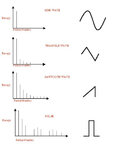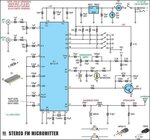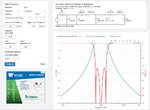dl09
Full Member level 4
If the waveform begins at positive 0.5 volt,
Then increases to 5 volts, then decreases to
Positive 0.5 volt, then increases to 5 volts and has a
Frequency of 40 megahertz, will a passband
Filter with lower cutoff frequency of 100 megahertz and a higher cutoff frequency of
200 megahertz, block such a waveform?
Then increases to 5 volts, then decreases to
Positive 0.5 volt, then increases to 5 volts and has a
Frequency of 40 megahertz, will a passband
Filter with lower cutoff frequency of 100 megahertz and a higher cutoff frequency of
200 megahertz, block such a waveform?





